Progress on the Myrrh Bearing Women icon moved forward this week with this most delightful performance by bass-baritone Ian Schipper, who was recording his final entry to the MNTA Young Artist Final Competition, in which he was a national finalist. We wish him the best and are all his fans from this point on.
The Edge
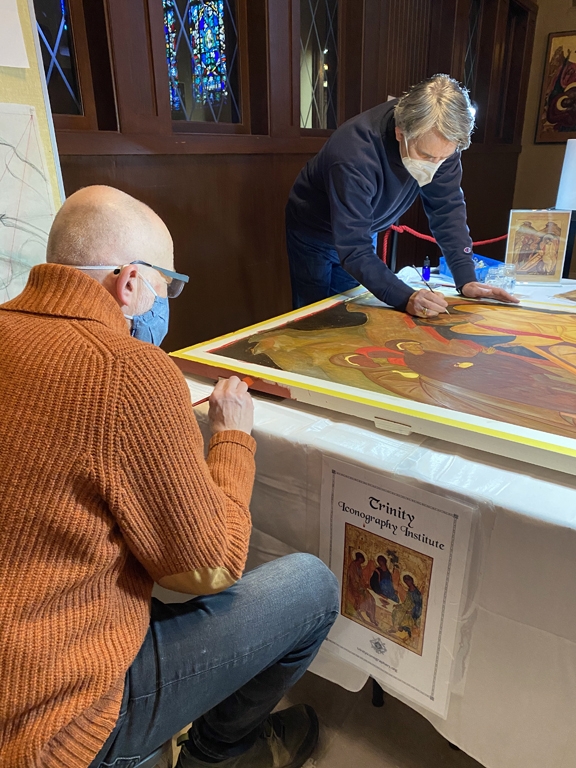
One of the finishing steps is making sure that the edges of the icon are protected. This is one of the only areas on the icon board in which we allow acrylic paint to be applied because it offers a harder, more durable finish to protect the icon.
Keith Walters, a student in our beginning program, helped us this week by first sanding the edges before painting. This professionally made icon board came all the way from Bulgaria, where there is a well established tradition of icon board making. In the long trip over, some of the corners were damaged and needed repair. Father Jon applied gesso that the Institute students made, repairing the corners. Keith smoothed these reparations with 400 grit sandpaper, then taped off the gessoed top of the board to prevent over painting. You can see that the tape we use is yellow “Frog Tape” which is specifically designed for delicate surfaces, enabling us to carefully remove it without disrupting the gesso. We also use this tape on top of the icon in the very beginning, to sequester areas to be gilded from areas to be painted.
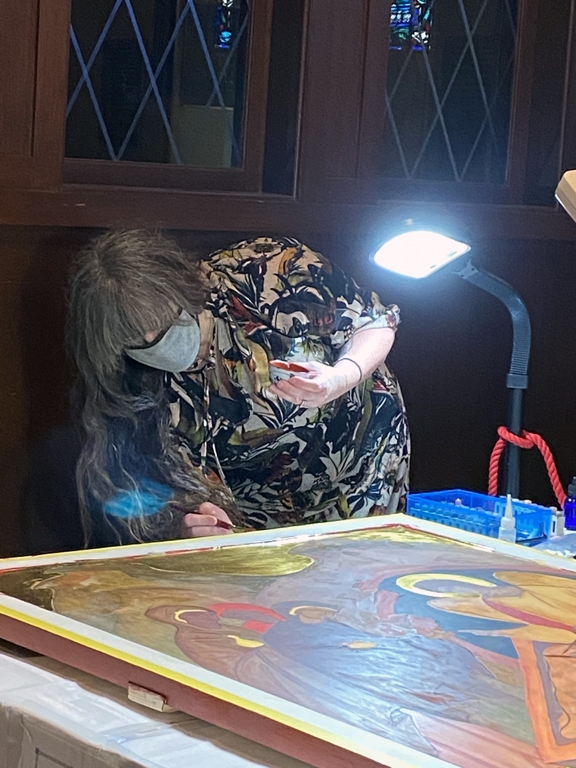
A final coat of acrylic is applied by Teresa Blackwell, a beginning student who is writing her first icon. As you can see, the edge is a warm red. We are using Iron Oxide red, the most traditional shade of red used on the edges of icons probably because traditionally iron-based pigments were very easy to find in nature. This beautiful color also coordinates with the color palette of this icon, which includes shades of green, gold and red.
This was the last week in which beginning students were able to help. The icon has now moved into the next phase, requiring more advanced painting skills as we approach highlighting and definition.
Faces

We are just beginning the “Sankir” (flesh tone) on the “Mary in the Middle” who will have the darkest skin tone of the three Marys and the most stunning red garment. Her facial expression is sorrowful or perhaps fearful. She even looks a little modern! No surprise, some modern artists (like Picasso) studied the iconographic style. Father Jon Buffington is painting the face of this Mary.
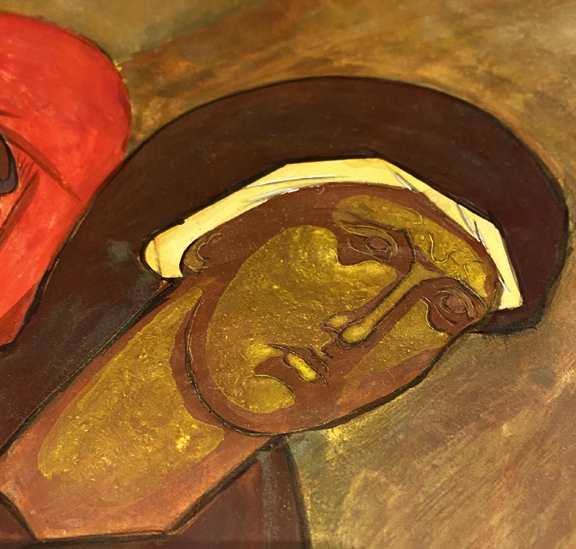
This is Mary Magdalene and she is being painted by our Assistant Iconography Instructor, Ania Kocurek-Williams. Painting with egg tempera involves applying many thin layers of transparent pigment. We move from applying the darkest pigment first to progressively lighter pigments with each step, which is also intended to reflect the theology of this vocation – moving from darkness to light. You will notice how over the next several weeks the faces will evolve and come to life, as we apply multiple layers of pigment. Each successive color is painted in what we call “facial masses.” With each new color, the facial mass gradually decreases, helping to create dimension and definition of the face.
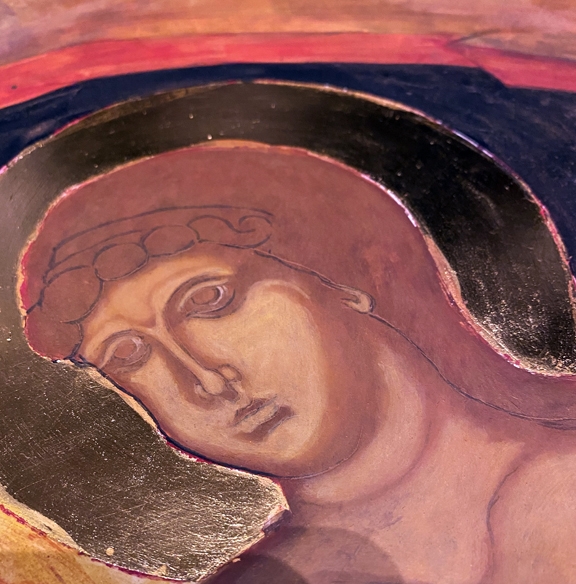
Angelos is the Greek word for angel, which is derived from the Hebrew word for messenger. Here is the face of the Angel who delivers the message of the resurrection to the Marys.
Mountains
Mountains, like other scenery in iconography, can point the viewer toward the important message of the scene. The two mountains in the Myrrh Bearing Women icon dip down toward the geometric center of the icon which is the center of action – it is where the Angel’s hand in blessing reaches toward Mary Magdalene’s hand in supplication to receive the Angel’s message of the resurrection.
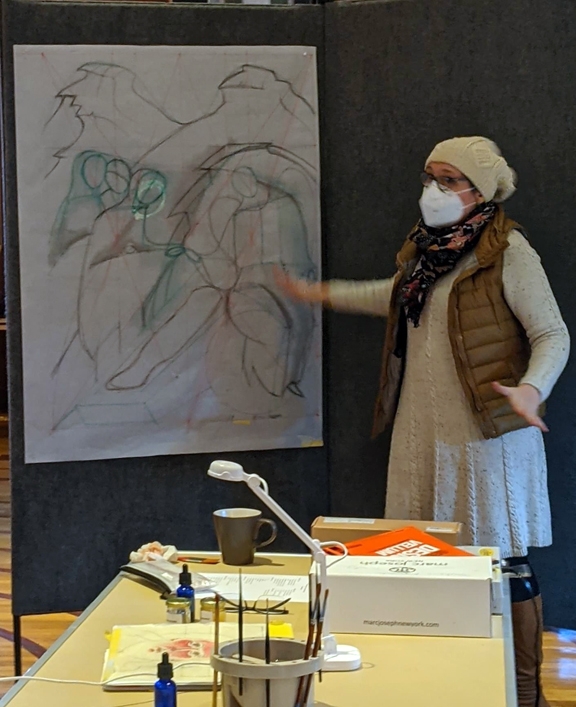
NB: The Trinity icon (over the Baptistry) utilizes this same technique with a natural element. The singular tree behind the center angel who represents Christ, is the Oak of Mamre and foreshadows Christ’s death on the Cross. It also helps us determine which of the three angels is Christ.
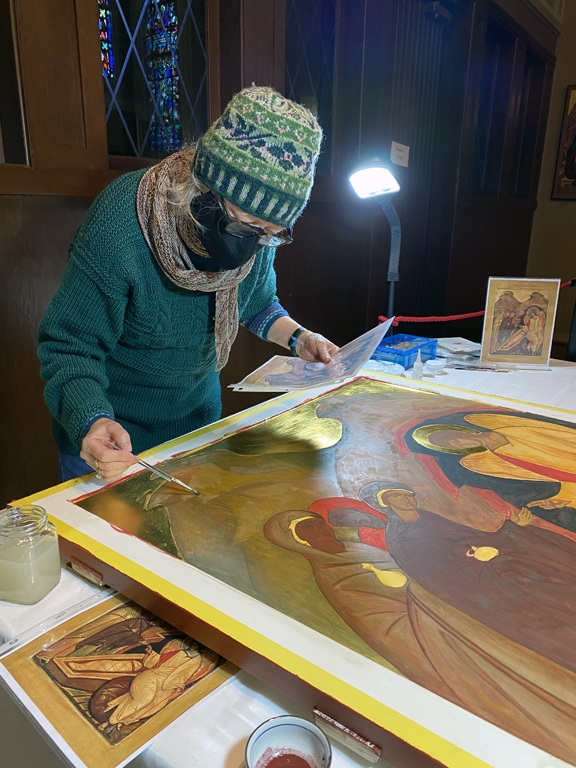
Cheri Munske, an advanced Iconography student and artist, paints the detail of the mountains in the iconographic style. With her artistic contribution, the mountain tops bring the color palette of the icon to life. Cheri applied various blends of Verdaccio chiara with Titanium white to create the initial highlights.
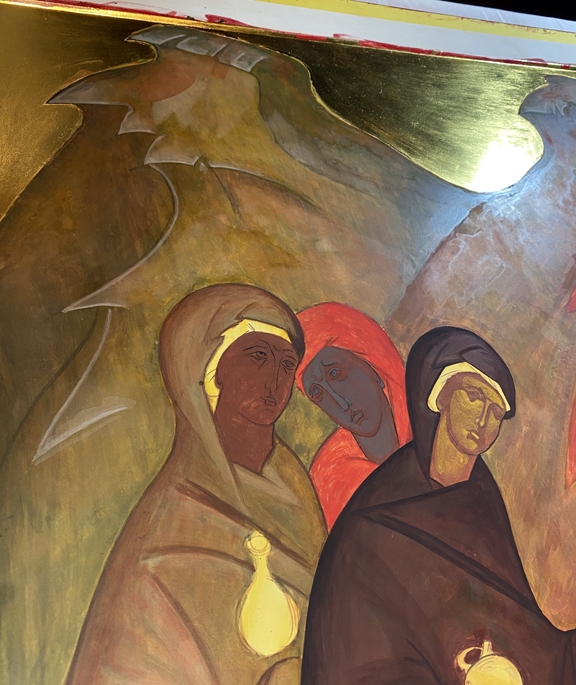
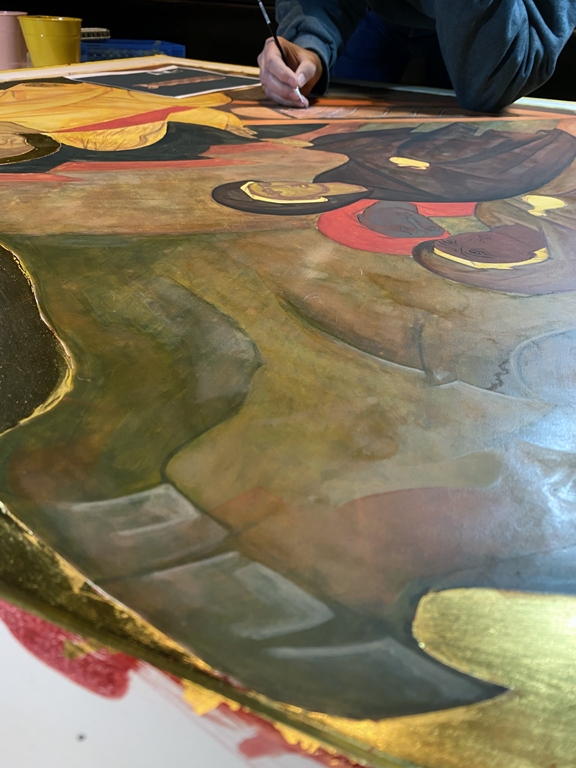
The Shroud

Father Jon chose an ancient burial cloth pattern for the shroud which adds artistry to the central point. Watch for upcoming details. This photo also provides a nice close up of the Angel’s blessing hand and Mary Magdalene’s acceptance of the message.
Christine Thum Schlesser continues to work on the garments. This week she outlined the “morellone” colored cloak of Mary Magdalene with Burnt umber and Burnt siena and used light washes of the same to begin defining the shadows.
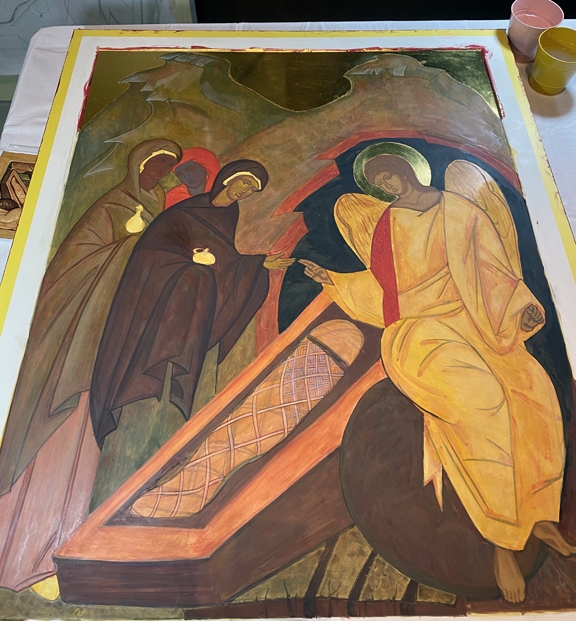
This stage marks the end of the week, 2/11/21.